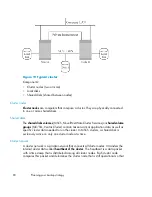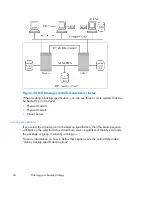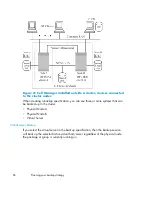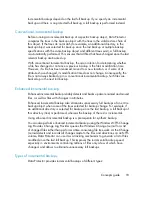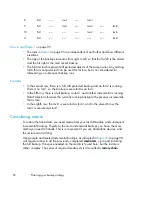
Incremental backups depend on the last full backup. If you specify an incremental
backup and there is no protected full backup, a full backup is performed instead.
Conventional incremental backup
Before running an incremental backup of a specific backup object, Data Protector
compares the trees in the backup object with the trees in the valid restore chain of
this object. If the trees do not match (for example, an additional directory in the
backup object was selected for backup since the last backup or multiple backup
specifications with the same backup object and different trees exist), a full backup
is automatically performed. This ensures that all files that have changed since the last
relevant backup are backed up.
With conventional incremental backup, the main criterion for determining whether
a file has changed or not since a previous backup is the file's modification time.
However, if a file has been renamed, moved to a new location, or if some of its
attributes have changed, its modification time does not change. Consequently, the
file is not always backed up in a conventional incremental backup. Such files are
backed up in the next full backup.
Enhanced incremental backup
Enhanced incremental backup reliably detects and backs up also renamed and moved
files, as well as files with changes in attributes.
Enhanced incremental backup also eliminates unnecessary full backups of an entire
backup object when some of the trees selected for backup change. For example, if
an additional directory is selected for backup since the last backup, a full backup of
this directory (tree) is performed, whereas the backup of the rest is incremental.
Using enhanced incremental backup is a prerequisite for synthetic backup.
You can also perform enhanced incremental backup using the Windows NTFS Change
Log Provider. Change Log Provider queries the Windows Change Journal for a list
of changed files rather than performs a time-consuming file tree walk. As the Change
Journal detects and records all changes made to the files and directories on an NTFS
volume, Data Protector can use it as a tracking mechanism to generate a list of files
modified since the last full backup. This improves the incremental backup speed,
especially in environments containing millions of files only a few of which have
changed, and allows to eliminate unnecessary full backups.
Types of incremental backups
Data Protector provides incremental backups of different types:
Concepts guide
93
Summary of Contents for B6960-96035
Page 17: ...Overview of backup and automated media copy sessions 340 105 Concepts guide 17 ...
Page 20: ...20 ...
Page 22: ...Publication history 22 ...
Page 132: ...Planning your backup strategy 132 ...
Page 182: ...Media management and devices 182 ...
Page 186: ...Users and user groups 186 ...
Page 204: ...The Data Protector internal database 204 ...
Page 218: ...Figure 62 Direct SIP integration example Service management 218 ...
Page 242: ...Integration with database applications 242 ...
Page 264: ...Synthetic backup 264 ...
Page 274: ...Split mirror concepts 274 ...
Page 288: ...Snapshot concepts 288 ...
Page 344: ...Further information 344 ...
Page 402: ...Glossary 402 ...


